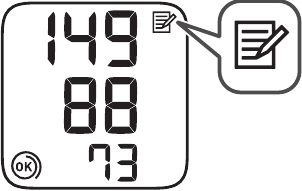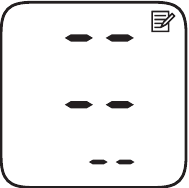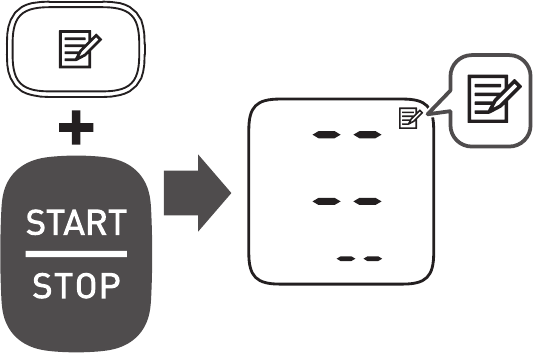Измеряем давление на запястье
Мы уже писали о том, что в результате одного из исследований, медики пришли к выводу, что большинство негативных отзывов о тонометрах на запястье связано с тем, что люди просто не умеют измерять ими давление.
При этом точность гаджетов и адекватность показаний, перепроверенных в клинических условиях, сомнений не вызывает. Давайте разберемся, как правильно мерить давление на запястье.
Кому это удобно
Обычно говорят, что категорически не подходят тонометры на запястье для пожилых. На это есть ряд оснований.
Как правило, с запястье рекомендуют мерить до 40-45 лет, а плечевыми — уже для людей старшего возраста. Дело в том, что сосуды на запястье со временем теряют эластичность, поэтому велик риск большой погрешности. Вторая причина — атеросклероз артерий, при котором показания также могут быть неточными.
Ну и, наконец, сопутствующие в некоторых случаях отклонения, например, тремор могут нарушить, сбить процесс измерения в одну или другую сторону.
Чем измерять
Сегодня есть ряд стремлений сделать процесс измерения давления менее «традиционным». Попытки создать «тонометр-часы» предпринимаются систематически. Вот лишь несколько гаджетов, которые приблизились к этому: тайваньская компания Rootiпредставила W/me2 с расчетом давления по скорости распространения пульсовой волны.
Healbe Gobe — проект с российскими корнями в числе прочих особенностей обещал мерить давление. Одно из подразделений Samsung разрабатывает гаджет Simband. Недавно стало известно о том, что китайский производитель смартфонов запустил свои смарт-часы H-One. Также над аналогичным проектом работает команда SoWatch.
Больше всего приблизились, кажется, к этому формату в Omron. На последней выставке CES2018 уже показали работающий прототип часов-тонометра!
Несмотря на все усилия, пока единственный достоверный прибор для измерения давления на запястье — тонометр! Они продаются в аптеках, им доверяют врачи, их точность подтверждена сотнями клинических испытаний.
Цифровой тонометр на запястье
Техника ошибается, но человек — еще чаще, поэтому сейчас тенденция идет к тому, что рекомендации в пользу цифровых тонометров, которые бы исключали человеческий фактор при измерениях: они сами накачивают, сами сдувают, сами делают все и показывают на дисплее данные.
При этом хороший аппарат для измерения давления на запястье должен сейчас обладать еще несколькими преимуществами:
- Большие цифры
- Функция выявления аритмии!
- Наглядный индикатор заряда, чтобы вовремя исключить погрешность аккумулятора
- Цветная шкала Всемирной организации здравоохранения
Последняя нужна, чтобы пользователь в быту мог интерпретировать результаты, и в случае высоких значений, когда стрелка будет указывать на оранжевый или красный цвет, мог своевременно обратиться к врачу за разъяснениями.
Память
Все познается в сравнении. Мало сделать замер, важно сохранить его и сопоставить с другими замерами, причем не цифры к цифрам, но и особенности поведения в этот день, питания, прогулки… Проще говоря «вспомнить все», что могло прямо или косвенно влиять на показания.
Встроенная память на десятки измерений, как правило, предусмотрена и в цифровых моделях.
Несколько моделей на выбор
Среди тонометров на запястье с такими параметрами можно выделить несколько популярных медицинских моделей:
Omron R1. Наглядный дисплей и компактные размеры, простое измерение и давления, и пульса, а также запатентованная технология Intellisense — безболезненного нагнетания.
B.Well Wa-88. Этот тонометр имеет встроенную память на 30 измерений и гарантирует точность при соблюдении всех правил +/- 3 мм рт. ст. За счет более плоской конструкции основной цифровой части выглядит легче и компактнее!
AND UB-201. Тонометр на запястье от известного японского производителя медтехники. Основная концепция, реализованная в данном гаджете, — простота. Доступ к измерению осуществляется одной кнопкой, что позволяет сделать замер быстро и понятно.
Как мерить
Чтобы показания были точными, необходимо соблюдать ряд условий. Физически подготовиться к измерению нетрудно: достаточно в течение 20-30 минут до замера побыть в спокойствии.
Речь не идет о том, чтобы намеренно превратить себя в «амебу»: просто достаточно заниматься обычными делами в обычном режиме, не подвергать нарочным нагрузкам.
Некоторые рекомендуют не употреблять спиртные напитки и табак, конечно, если нет потребности проверить именно их влияние на скачки давления.
Давление тонометром на запястье можно измерять и сидя, и стоя. Датчик с дисплеем следует повернуть «лицом к себе», а манжету разместить на расстоянии около 1 см от ладони.
Далее необходимо прислонить руку с тонометром к груди, на уровне сердца, а свободной рукой ухватить, поддерживая, локоть руки с аппаратом.
В этом случае расхождения с плечевыми конструкциями, которые считаются как бы «более эталонными» не будет превышать допустимых норм, обычно это 5 — 6 — 7 единиц.
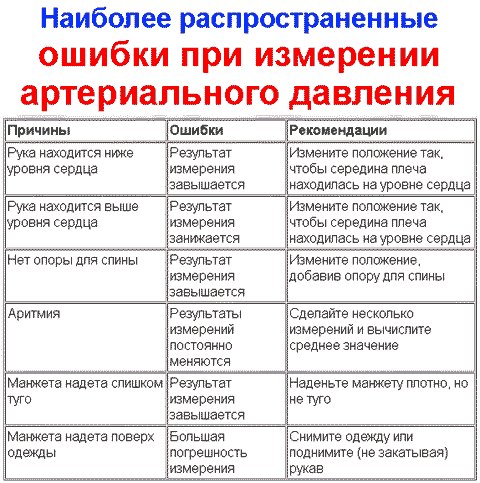
Метки Medisana, давление, тонометр
Introduction
This blood pressure monitor is to be worn on your wrist. This blood pressure monitor uses the oscillometric method of blood pressure measurement. When the cuff inflates, this monitor senses the pressure pulsations of the artery underneath the cuff. The pulses are called oscillometric pulses. The electronic pressure sensor displays a digital reading of blood pressure.
Safety Instructions
This instruction manual provides you with important information about the RS1 Automatic Wrist Blood Pressure Monitor. To ensure the safe and proper use of this monitor, READ and UNDERSTAND all of the safety and operating instructions. If you do not understand these instructions or have any questions, contact your OMRON retail outlet or distributor before attempting to use this monitor. For specific information about your own blood pressure, consult with your physician.
Intended Use
This device is a digital monitor intended for use in measuring blood pressure and pulse rate in adult patient population with wrist circumference ranging from 13.5 cm to 21.5 cm. This monitor detects the appearance of irregular heartbeats during measurement and gives a warning signal with readings. It is mainly designed for general household use.
Receiving and Inspection
Remove this monitor from the packaging and inspect for damage. If this monitor is damaged, DO NOT USE and consult with your OMRON retail outlet or distributor.
Know Your Monitor
Contents
Monitor, 2 «AAA» alkaline batteries, instruction manual
Monitor
- Wrist cuff (Wrist circumference 13.5 cm to 21.5 cm)
- Display
- Battery compartment
- [Memory] button
- [START/STOP] button
Display and Symbols
| A | Systolic blood pressure reading | |
| B | Diastolic blood pressure reading | |
| C |  |
Heartbeat symbol Flashes while taking a measurement. |
| D |  |
Cuff wrap guide symbol (OK) Appears if the wrist cuff is wrapped around the wrist correctly while taking a measurement. It also appears when viewing past readings. |
 |
Cuff wrap guide symbol (loose) Appears if the wrist cuff is not wrapped around the wrist correctly while taking a measurement. It also appears when viewing past readings. |
|
| E |  |
Memory symbol Appears when viewing readings stored in the memory. |
| F |  |
Irregular heartbeat symbol Appears along with readings when an irregular rhythm is detected 2 or more times during a measurement. |
| G |  flashes |
Battery symbol (low) Flashes when batteries are low. |
 appears |
Battery symbol (depleted) Appears when batteries are depleted. |
|
| H |  |
Deflation symbol Appears during cuff deflation. |
| I | Pulse display Pulse rate appears after the measurement. |
2013 ESH/ESC* Guidelines for the management of arterial hypertension
Definitions of hypertension by office and home blood pressure levels
| Office | Home | |
| Systolic Blood Pressure | ≥ 140 mmHg | ≥ 135 mmHg |
| Diastolic Blood Pressure | ≥ 90 mmHg | ≥ 85 mmHg |
These ranges are from statistical values for blood pressure.
* European Society of Hypertension (ESH) and European Society of Cardiology (ESC).
- NEVER diagnose or treat yourself based on your readings. ALWAYS consult with your physician.
Preparation
Installing Batteries
- Push down the hook of the battery cover and pull downward.
- Insert 2 «AAA» alkaline batteries as indicated in the battery compartment.
- Close the battery cover.
Note
- When the «
» symbol flashes on the display, it is recommended you replace batteries.
- To replace batteries, turn your monitor off and remove all batteries. Then replace with 2 new alkaline batteries at the same time.
- Replacing batteries will not delete previous readings.
- The supplied batteries may have a shorter life than new batteries.
- Disposal of used batteries should be carried out in accordance with local regulations.
Blood Pressure Measurement Tips
To help ensure an accurate reading, follow these directions:
- Stress raises blood pressure. Avoid taking measurements during stressful times.
- Measurements should be taken in a quiet place.
- It is important to take measurements at same times each day. Taking measurements in the morning and in the evening is recommended.
- Remember to have a record of your blood pressure and pulse readings for your physician. A single measurement does not provide an accurate indication of your true blood pressure. Please use the Blood Pressure Diary to keep records of several readings over a certain period of time. To download PDF files of the diary, visit www.omron-healthcare.com.
- Avoid bathing, drinking alcohol or caffeine, smoking, exercising and eating for at least 30 minutes before taking a measurement.
- Rest for at least 5 minutes before taking a measurement.
Applying the Wrist Cuff
Note
- Following steps are for applying the wrist cuff to your left wrist. When you take a measurement on your right wrist, apply the wrist cuff using the same steps as on your left wrist.
- The blood pressure can differ between the right wrist and the left wrist, and the measured blood pressure values can be different. OMRON recommends to always use the same wrist for measurement. If the values between both wrists differ substantially, please check with your physician as to which wrist to use for your measurements.
- Remove tight-fitting, thick clothing and any accessories from your wrist while taking a measurement.
- Apply the wrist cuff to your left wrist.
Roll up sleeve. Make sure your sleeve is not rolled up too tightly on your arm. This may constrict the flow of blood in your arm. - Put your wrist through the cuff loop.
Your palm and monitor display should both face upward. - Position the wrist cuff leaving a clearance of 1 to 2 cm between the cuff and the bottom of your palm.
- Wrap the wrist cuff firmly around your wrist. Do not apply over clothing.
Check to make sure that there is no gap between your wrist and the cuff.
Note- Make sure the wrist cuff does not cover the protruding part of the wrist bone on the outside of your wrist.
- Make sure the wrist cuff does not cover the protruding part of the wrist bone on the outside of your wrist.
Sitting Correctly
To take a measurement, you need to be relaxed and comfortably seated in a room with a comfortable temperature. Place your elbow on the table to support your arm.
- Sit in a chair with your legs uncrossed and your feet flat on the floor.
- Sit with your back and arm being supported.
- Your monitor must be approximately the same level as your heart. If the monitor is too high above your heart, your blood pressure will be artificially low. If the monitor is too low below your heart, your blood pressure will be artificially high.
- Relax your wrist and hand. Do not bend your wrist back, clench your fist, or bend your wrist forward.
Using Your Monitor
Taking a Measurement
Note
- To stop the measurement, press the [START/STOP] button once to deflate the wrist cuff.
- DO NOT use this monitor with other medical electrical (ME) equipment simultaneously. This may result in incorrect operation of the monitor and/or cause an inaccurate reading.
- Remain still and DO NOT talk while taking a measurement.
- Press the [START/STOP] button.
All symbols appear on the display before starting the measurement. - Remain still and do not move or talk until the entire measurement process is completed.
As the cuff inflates, your monitor automatically determines your ideal inflation level. This monitor detects your blood pressure and pulse rate during inflation.
The «» symbol flashes at every heartbeat.
Note - Press the [START/STOP] button to turn your monitor off.
Note- Your monitor will automatically turn off after 2 minutes.
- Wait 2 — 3 minutes between measurements. The wait time allows the arteries to decompress and return to their pre-measurement form. You may need to increase the wait time depending on your individual physiological characteristics.
Using Memory Function
Your monitor automatically stores the last reading.
Viewing the Readings Stored in Memory
- Press the
button.
The last reading is displayed.
Note- If there are no readings stored in the memory, the screen below is displayed.
- If there are no readings stored in the memory, the screen below is displayed.
Other Settings
Deleting the Readings Stored in Memory
- Press the
button, then the «
» symbol appears.
- While holding the
button down, press and hold the [START/STOP] button for more than 2 seconds.
Error Messages and Troubleshooting
In case of any of the below problems occur during measurement, first check that no other electrical device is within 30 cm. If the problem persists, please refer to the table below.
| Display/Problem | Possible Cause | Solution |
 appears or the wrist cuff does not inflate. |
The wrist cuff is not applied correctly. | Apply the wrist cuff correctly, then take another measurement. |
| Air is leaking from the wrist cuff. | Contact your OMRON retail outlet or distributor. | |
 appears |
The wrist cuff is overinflated exceeding 300 mmHg. | Do not touch the wrist cuff while taking a measurement. |
 appears |
You move or talk during a measurement. Vibrations disrupt a measurement. |
Remain still and do not talk during a measurement. |
 appears |
The pulse rate is not detected correctly. | Apply the wrist cuff correctly, then take another measurement. Remain still and sit correctly during a measurement. If the «  » symbol continues to appear, we recommend you to consult with your physician. » symbol continues to appear, we recommend you to consult with your physician. |
 appears |
||
 appears |
||
 appears |
The monitor is malfunctioned. | Press the [START/STOP] button again. If «Er» still appears, contact your OMRON retail outlet or distributor. |
 flashes |
Batteries are low. | Replacing all batteries with 2 new alkaline batteries is recommended. |
 appears or the monitor is turned off unexpectedly during a measurement |
Batteries are depleted. | Immediately replace all batteries with 2 new alkaline batteries. |
| No power. Nothing appears on the display of the monitor. | Batteries are completely depleted. | |
| Battery polarities are not properly aligned. | Check the battery installation for proper placement. | |
| Readings appear too high or too low. | Blood pressure varies constantly. Many factors including stress, time of day, and/or how you apply the wrist cuff, may affect your blood pressure. | |
| Any other problems occur. | Press the [START/STOP] button to turn the monitor off, then press it again to take a measurement. If the problem continues, remove all batteries and wait for 30 seconds. Then reinstall batteries. If the problem still persists, contact your OMRON retail outlet or distributor. |
Maintenance
To protect your monitor from damage, please follow the directions below:
- Changes or modifications not approved by the manufacturer will void the user warranty.
- DO NOT disassemble or attempt to repair this monitor or other components. This may cause an inaccurate reading.
Storage
- Store your monitor in a clean, safe location.
Do not store your monitor:
- If your monitor is wet.
- In locations exposed to extreme temperatures, humidity, direct sunlight, dust or corrosive vapors such as bleach.
- In locations exposed to vibrations or shocks.
Cleaning
- Do not use any abrasive or volatile cleaners.
- Use a soft dry cloth or a soft cloth moistened with neutral soap to clean your monitor and wrist cuff, and then wipe them with a dry cloth.
- Do not wash or immerse your monitor and wrist cuff in water.
- Do not use gasoline, thinners or similar solvents to clean your monitor and wrist cuff.
Calibration and Service
- The accuracy of this blood pressure monitor has been carefully tested and is designed for a long service life.
- It is generally recommended to have the unit inspected every two years to ensure correct functioning and accuracy. Please consult your authorised OMRON dealer or the OMRON Customer Service at the address given on the packaging or attached literature.
Specifications
| Product category | Electronic Sphygmomanometers |
| Product description | Automatic Wrist Blood Pressure Monitor |
| Model (Code) | RS1 (HEM-6160-E) |
| Display | LCD digital display |
| Cuff pressure range | 0 to 299 mmHg |
| Blood pressure measurement range | SYS: 60 to 260 mmHg DIA: 40 to 215 mmHg |
| Pulse measurement range | 40 to 180 beats / min. |
| Accuracy | Pressure: ±3 mmHg Pulse: ±5% of display reading |
| Inflation | Automatic by electric pump |
| Deflation | Automatic rapid deflation |
| Measurement method | Oscillometric method |
| Operation mode | Continuous operation |
| IP classification | IP 22 |
| Rating | DC3 V 3.0 W |
| Power source | 2 «AAA» alkaline batteries 1.5V |
| Battery life | Approximately 300 measurements (using new alkaline batteries) |
| Durable period (Service life) | 5 years |
| Operating conditions | +10°C to +40°C / 15 to 90% RH (noncondensing) / 800 to 1060 hPa |
| Storage / Transport conditions | -20°C to +60°C / 10 to 90% RH (noncondensing) |
| Weight | Approximately 85 g not including batteries |
| Dimensions | Approximately 84 mm (w) × 62 mm (h) × 21 mm (l) (not including the wrist cuff) |
| Measurable wrist circumference | 13.5 to 21.5 cm |
| Memory | Stores last reading |
| Contents | Monitor, 2 «AAA» alkaline batteries, instruction manual |
| Protection against electric shock | Internally powered ME equipment |
| Applied part | Type BF (wrist cuff) |
| Maximum temperature of the applied part | Lower than +48°C |
Note
- These specifications are subject to change without notice.
- In the clinical validation study, K5 was used on 85 subjects for determination of diastolic blood pressure.
- This monitor is clinically investigated according to the requirements of ISO 81060-2:2013.
- IP classification is degrees of protection provided by enclosures in accordance with IEC 60529. This monitor is protected against solid foreign objects of 12.5 mm diameter and greater such as a finger, and against oblique falling water drops which may cause issues during a normal operation.
- This device has not been validated for use on pregnant patients.
- Please report to the manufacturer and the competent authority of the Member State in which you are established about any serious incident that has occurred in relation to this device.
Important Safety Information
Please read the Important Safety Information in this instruction manual before using this monitor.
Please follow this instruction manual thoroughly for your safety. Please keep for future reference. For specific information about your own blood pressure, CONSULT WITH YOUR PHYSICIAN.
Indicates a potentially hazardous situation which, if not avoided, could result in death or serious injury.
- DO NOT use this monitor on infants, toddlers, children or persons who cannot express themselves.
- DO NOT adjust medication based on readings from this blood pressure monitor. Take medication as prescribed by your physician. ONLY a physician is qualified to diagnose and treat high blood pressure.
- DO NOT use this monitor on an injured wrist or a wrist under medical treatment.
- DO NOT apply the wrist cuff on your wrist while on an intravenous drip or blood transfusion.
- DO NOT use this monitor in areas containing high frequency (HF) surgical equipment, magnetic resonance imaging (MRI) equipment, computerized tomography (CT) scanners. This may result in incorrect operation of the monitor and/or cause an inaccurate reading.
- DO NOT use this monitor in oxygen rich environments or near flammable gas.
- Consult with your physician before using this monitor if you have common arrhythmias such as atrial or ventricular premature beats or atrial fibrillation; arterial sclerosis; poor perfusion; diabetes; pregnancy; pre-eclampsia or renal disease. NOTE that any of these conditions in addition to patient motion, trembling, or shivering may affect the measurement reading.
- NEVER diagnose or treat yourself based on your readings. ALWAYS consult with your physician.
- This product contains small parts that may cause a choking hazard if swallowed by infants, toddlers or children.
Battery Handling and Usage
Indicates a potentially hazardous situation which, if not avoided, may result in minor or moderate injury to the user or patient, or cause damage to the equipment or other property.
- Keep batteries out of the reach of infants, toddlers or children.
- Stop using this monitor and consult with your physician if you experience skin irritation or discomfort.
- Consult with your physician before using this monitor on a wrist where intravascular access or therapy, or an arteriovenous (A-V) shunt, is present because of temporary interference to blood flow which could result in injury.
- Consult with your physician before using this monitor if you have had a mastectomy.
- Consult with your physician before using this monitor if you have severe blood flow problems or blood disorders as cuff inflation can cause bruising.
- DO NOT take measurements more often than necessary because bruising, due to blood flow interference, may occur.
- ONLY inflate the wrist cuff when it is applied on your wrist.
- Remove the wrist cuff if it does not start deflating during a measurement.
- DO NOT use this monitor for any purpose other than measuring blood pressure.
- During measurement, make sure that no mobile device or any other electrical device that emits electromagnetic fields is within 30 cm of this monitor. This may result in incorrect operation of the monitor and/or cause an inaccurate reading.
- DO NOT disassemble or attempt to repair this monitor or other components. This may cause an inaccurate reading.
- DO NOT use in a location where there is moisture or a risk of water splashing this monitor. This may damage this monitor.
- DO NOT use this monitor in a moving vehicle such as in a car.
- DO NOT drop or subject this monitor to strong shocks or vibrations.
- DO NOT use this monitor in places with high or low humidity or high or low temperatures.
- Ensure this monitor is not impairing blood circulation by observing the wrist while measurement is occurring.
- DO NOT use this monitor in high-use environments such as medical clinics or physician offices.
- DO NOT use this monitor with other medical electrical (ME) equipment simultaneously. This may result in incorrect operation of the monitor and/or cause an inaccurate reading.
- Avoid bathing, drinking alcohol or caffeine, smoking, exercising and eating for at least 30 minutes before taking a measurement.
- Rest for at least 5 minutes before taking a measurement.
- Remove tight-fitting, thick clothing and any accessories from your wrist while taking a measurement.
- Remain still and DO NOT talk while taking a measurement.
- ONLY use this monitor on persons whose wrist circumference is within the specified range of the cuff.
- Ensure that this monitor has acclimated to room temperature before taking a measurement. Taking a measurement after an extreme temperature change could lead to an inaccurate reading. OMRON recommends waiting for approximately 2 hours for the monitor to warm up or cool down when the monitor is used in an environment within the temperature specified as operating conditions after it is stored either at the maximum or at the minimum storage temperature. For additional information of operating and storage/transport temperature.
- DO NOT crease the wrist cuff excessively.
- Read and follow the «Correct Disposal of This Product» when disposing of the device and any used accessories or optional parts.
- DO NOT use this monitor after the durable period has ended.
- DO NOT insert batteries with their polarities incorrectly aligned.
- ONLY use 2 «AAA» alkaline batteries with this monitor. DO NOT use other types of batteries. DO NOT use new and used batteries together. DO NOT use different brands of batteries together.
- Remove batteries if this monitor will not be used for a long period of time.
- If battery fluid should get in your eyes, immediately rinse with plenty of clean water. Consult with your physician immediately.
- If battery fluid should get on your skin, wash your skin immediately with plenty of clean, lukewarm water. If irritation, injury or pain persists, consult with your physician.
- DO NOT use batteries after their expiration date.
- Periodically check batteries to ensure they are in good working condition.
- ONLY use batteries specified for this monitor. Use of unsupported batteries may damage and/or may be hazardous to this monitor.
Here you can download full pdf version of manual, it may contain additional safety instructions, warranty information, FCC rules, etc.
Точность показателей давления напрямую зависит от соблюдения инструкций и правил по измерению.
Данная статья расскажет о том, как правильно мерить давление электронным тонометром: как им пользоваться, надевать манжету и избежать ошибок при проведении процедуры.
Подготовка к измерению
Замерять кровяное давление необходимо в состоянии покоя. Для этого перед процедурой рекомендованы 5 — 10 минут отдыха. Не стоит измерять давление сразу после волнения, еды, зарядки, принятия ванны. После употребления крепкого чая, кофе, какао, курения необходим интервал 1 — 2 часа.
АД измеряют утром, не ранее, чем через 1 час после сна. При необходимости, повторное измерение проводится вечером. Перед процедурой следует помочиться. В случае неотложного состояния, резкого ухудшения самочувствия, этой инструкцией можно пренебречь.
Правильная поза
Измерение артериального давления проводится в положении сидя. Сидеть нужно прямо, с опорой для спины, ноги стоят на полу, не перекрещены. Руку нужно положить на ровную поверхность так, чтобы плечо было на одном уровне с проекцией сердца, ладонью вверх. Тонометр располагают рядом так, чтобы удобно было смотреть на экран, не совершая лишних движений. Следят за тем, чтобы шланг не пережимался рукой. Во время процедуры нужно расслабиться, нельзя шевелиться, разговаривать.

Лежа давление измеряется только в экстренных случаях, когда невозможно усадить пациента. Руку нужно выпрямить, положить ладонью вверх, слегка отвести от туловища.
На какой руке мерить?
Для определения руки, на которой будут проводиться дальнейшие измерения, необходимо провести тест. В начале использования тонометра измерения делают трижды на каждой руке. Важно соблюдать интервал от 2 до 5 минут между процедурами, измерять поочередно на правой и левой руке. Вычислив средние цифры АД, выбирают ту, показатели на которой оказались выше.
Кардиологи советуют постоянно мерить давление на двух руках. Это нужно для контроля правильности процедуры и раннего выявления серьезных нарушений. В норме, разница показателей не должна превышать 10 мм. рт. ст. Пульс на обеих руках одинаков.
Алгоритм проведения замера в зависимости от типа тонометра
Рассмотрим более подробно алгоритм действий для каждого типа прибора.
Автоматический
Цифровой тонометр-автомат наиболее прост в применении, что делает его удобным для пожилых и иммобилизованных людей. Аппарат сам нагнетает и выпускает воздух и отображает показатели на дисплее.

Чтобы измерить давление автоматическим тонометром, нужно:
- Занять правильную, удобную позицию.
- Снять резинки, часы, браслеты, поднять рукав одежды той конечности, на которой будет регистрироваться давление. Закатывать рукав нежелательно — он может сдавливать руку выше манжеты.
- Оценить работоспособность тонометра, отсутствие видимых повреждений, герметичность манжеты, целостность пневмошланга и провода питания, наличие и правильность установки батареек.
- Приложить манжету к плечу, застегнуть ее вокруг руки плотно, но без сдавления (можно просунуть палец под манжету). Нижний ее край располагается на 2 пальца выше локтевого сгиба. Место прикрепления шланга совпадает с центром внутренней поверхности предплечья. На некоторых манжетах есть вспомогательные метки. Проследить за тем, чтобы края одежды не попадали под манжету, не создавали складок — это влияет на результат процедуры.
- Подключить прибор к сети (при необходимости), включить его соответствующей кнопкой.
- Тонометр сразу начнет надувать манжету и регистрировать показатели. В это время следует сидеть неподвижно, не разговаривать, дышать нормально.
- Оценить показатели давления и пульса на дисплее, записать их в тетрадь для дальнейшего учета динамики.
- Выключить тонометр, снять манжету.
Полуавтоматический
Алгоритм регистрации пульсовых колебаний прибором-полуавтоматом не отличается от автоматического. Разница в том, что пациент самостоятельно накачивает грушей воздух в манжету.

Полуавтоматы считаются дешевле и долговечнее автоматических измерителей:
- Подготовка такая же, как при использовании автоматического прибора, перед тем как померить АД нужно — занять удобную позу, снять с руки одежду, проверить тонометр, батарейки, правильно наложить манжету.
- После полного включения тонометра необходимо взять грушу незанятой рукой.
- Сжимать и отпускать грушу, нагнетая до показателей, которые выше привычных на 25 — 30 мм. рт. ст. Если оно неизвестно, следует нагнетать до 180 — 200 мм. рт. ст.
- Нажать кнопку между грушей и шлангом прибора. Он начнет постепенно стравливать воздух и считывать данные давления и пульса.
- Показания высветятся на дисплее. Сравните их с предыдущими замерами, запишите в тетрадь.
- Выключить тонометр, кнопкой у груши стравить остатки воздуха, снять манжету.
Запястный (напульсный)
Компактный тонометр на запястье удобен для того, чтобы замерить АД например в поездках. Точность измерения у него ниже, чем у наплечных аппаратов. Это обусловлено изменением силы пульсации крови в сосудах, далеких от сердца.

Правила пользования запястным тонометром:
- Сядьте с опорой для спины.
- Осмотрите аппарат, убедитесь в наличии и правильности установки батареек.
- Наденьте тонометр, расположите его чуть ниже основания ладони, экраном к себе.
- Согнутую руку приведите к груди в расслабленном состоянии. Положение манжеты совпадает с уровнем сосковой линии.
- Включите устройство свободной рукой, подхватите ею локоть руки, на которой проводится измерение.
- Сидите спокойно, кисть лежит свободно, не двигайте пальцами, лучезапястным суставом.
- После оценки результатов следует снять и выключить тонометр. Не рекомендуется стягивать застегнутую манжету как напульсник.
Как часто и сколько раз можно и нужно повторять?
Здоровому взрослому рекомендуется отслеживать показатели давления каждые 3 месяца. Такой частоты достаточно, чтобы проверять состояние организма в динамике. Для самостоятельного контроля важно знать цифры рабочего (привычного) давления.
Страдающим гипертонией, хроническими нарушениями работы сердечно-сосудистой системы показано регулярное измерение кровяного давления дважды в день. При перманентной гипотонии рекомендуется проводить замеры по самочувствию. Строгой необходимости в частых измерениях нет.
Если давление измеряется регулярно, делать это следует в одно и то же время. Чтобы получить правдивый результат, достаточно провести 2 — 3 замера на каждой руке с перерывами по 2 — 3 мин. Большее количество процедур не эффективно для диагностики. Мерить АД больше 10 раз подряд на одной руке вредно, так как создает избыточную нагрузку на сосуды.
Может ли такой тонометр ошибаться?
Цифровые тонометры отличаются от механических чувствительностью и принципом работы. Это негативно отражается на точности показаний. По данным статистики фирм, производящих тонометры для домашнего использования, автоматический аппарат показывает неверные данные в 1 случае из 10.
Среди цифровых, полуавтомат считается самым точным. По принципу работы он ближе к механическому. Запястные тонометры больше других склонны к погрешностям. Это связано с местом измерения — сосуды в районе запястья тоньше, пульсация в них слабее. Поэтому, такие приборы нежелательно использовать после 50 лет, когда возможно появление холестериновых бляшек, ломкости сосудов.
Завышать цифры может замер давления сразу после нагрузки, пищи, пережитого волнения. Маленькая, туго затянутая манжета излишне пережимает ткани, что приводит к неверным показателям. Если рука опущена слишком низко во время процедуры, уровень давления будет ложно завышен. Проведение более 3 циклов подряд не дает сосудам прийти в изначальное положение.
Слишком низкие данные получаются при проведении процедуры сразу после сна. Ночью деятельность организма замедляется, показатели кровотока снижаются. Утром следует подождать 45 — 60 после пробуждения. Чрезмерно большая, плохо затянутая манжета или положение руки выше необходимого уровня также уменьшат истинные показатели.
Беременность может изменить привычные цифры давления в большую или меньшую сторону. Во время вынашивания ребенка происходит перестройка гормонального баланса, увеличение объема крови. Колебания показателей АД у беременных не считаются ошибкой прибора.
На точность показателей влияет состояние батареек, исправность прибора, скачки напряжения в электросети. Температура и влажность воздуха в помещении, в котором хранится и используется тонометр, могут отражаться на правильности его работы.
Полезные советы и распространенные ошибки
Если вы сомневаетесь в правильности показаний цифрового прибора, следует провести контроль с помощью механического тонометра. Желательно, чтобы эту процедуру проводил доктор. При разнице показаний цифрового и механического аппаратов более 10 единиц, достоверными считают результаты последнего.
Попросите врача или фармацевта обучить вас безошибочному наложению манжеты. В интернете можно посмотреть обучающие видео и фото с инструкциями.
Дневник артериального давления помогает отследить колебания показателей в динамике. Вести записи необходимо пациентам с поражениями органов выделительной, сердечно-сосудистой систем. В дневник заносят цифры утреннего и вечернего замера, дату и время. По согласованию с врачом, туда заносят данные о выделенной и выпитой жидкости.

Причины ошибок при измерении давления:
- Физическое, эмоциональное напряжение перед процедурой, движения, разговор во время работы тонометра.
- Неудобное положение руки, приводящее к напряжению. Неправильная позиция, согнутая спина, перекрещивание ног, несовпадение положения руки с уровнем сердца.
- Неверное положение манжеты — выше/ниже уровня сердца (ориентир — линия сосков), наложение поверх одежды, несовпадение метки с проекцией сосудов на руке.
- Пережатие тканей и сосудов украшениями, закатанным рукавом одежды.
- Несоответствие размера манжеты полноте конечности.
- Излишне тугое/слабое прилегание.
- Включение/начало измерения до закрепления манжеты.
- Недостаточное время отдыха между измерениями (не менее 2 минут).
- Работа рукой с наложенной манжетой при измерении давления самому себе полуавтоматическим тонометром.
- Техническое состояние аппарата, элементов питания, правильность включения в сеть.
Обзор лучших тонометров
Чтобы дома регулярно мерить давление, важно купить надежный аппарат с хорошими характеристиками. В данном рейтинге собраны лучшие автоматические тонометры популярных производителей.
| Модель | Omron M3 Comfort (Омрон) | AnD UA-1300 (Энд) | B Well WA-99 (Би Велл) | Microlife BP N1 Basic (Микролайф) |
| Страна производства | Япония | Япония | Швейцария | Швейцария |
| Тип | Автоматический на плечо | Автоматический на плечо | Автоматический на запястье | Полуавтоматический |
| Функции экрана | Датчик движения, крупные иконки | Индикатор нарушения ритма, подсчет среднего давления | Подсветка, цветовая шкала | Индикация движений, правильного положения прибора, аритмии |
| Дополнительные опции | Равномерная накачка с 4 сторон, энергосбережение | Голосовой помощник, запоминание уровня накачки манжеты | Отключается автоматически, 2 независимых дневника давления | Компактный блок, крупные цифры на дисплее |
| Память | 60 измерений, 2 независимых пользователя | 90 измерений | 60 измерений для 2 пользователей | 30 измерений |
| Цена | 3400 руб. | 4600 руб. | 2000 руб. | 1200 руб. |
Научившись правильной работе с тонометром, не забывайте регулярно замерять пульс и давление. Тетрадь с записями показаний приносите на прием — такой дневник поможет специалисту подобрать нужное лечение.

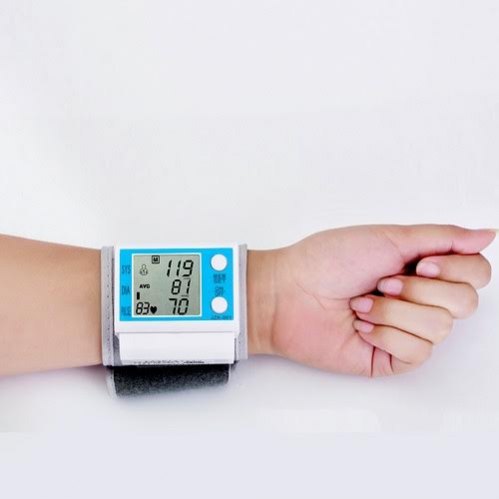
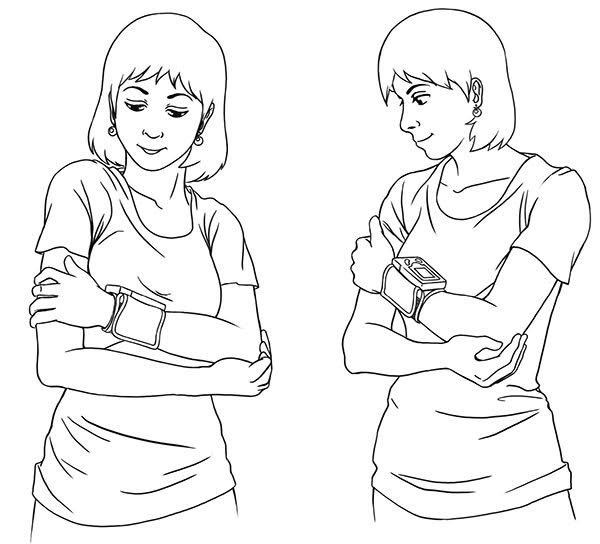
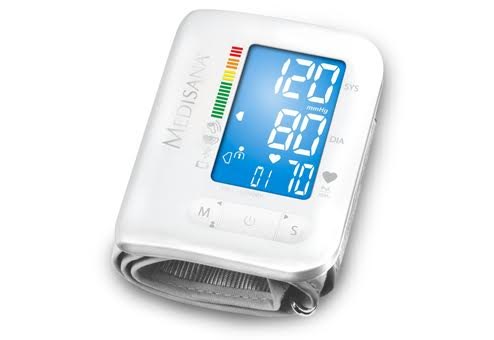
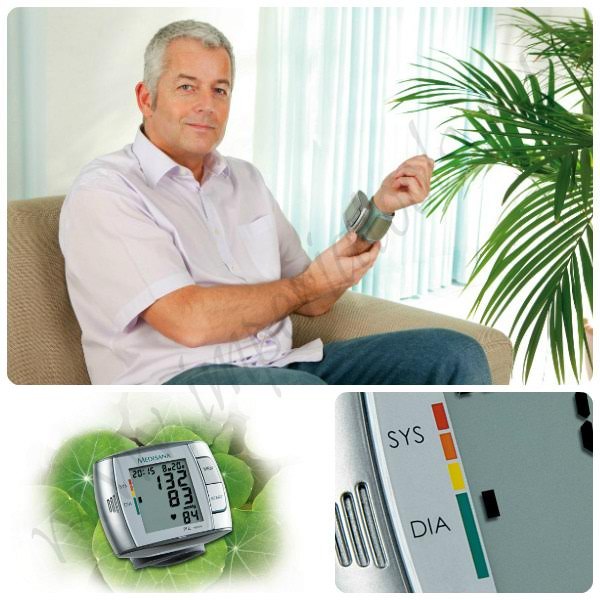
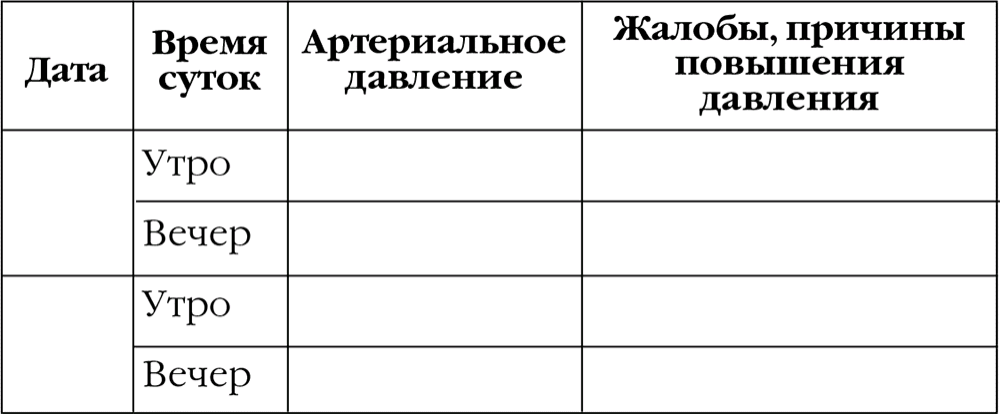
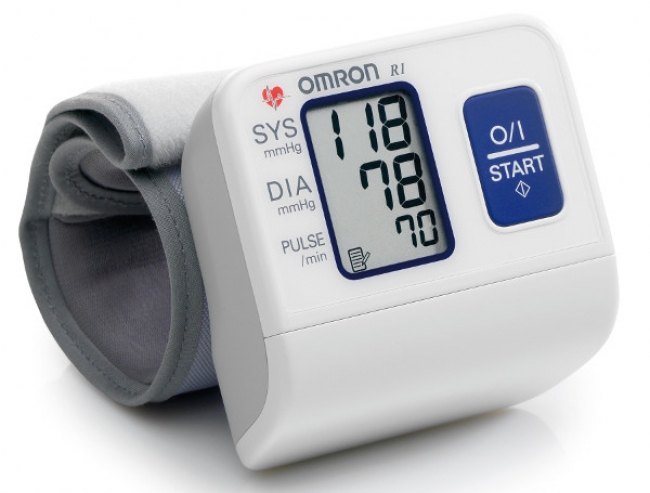
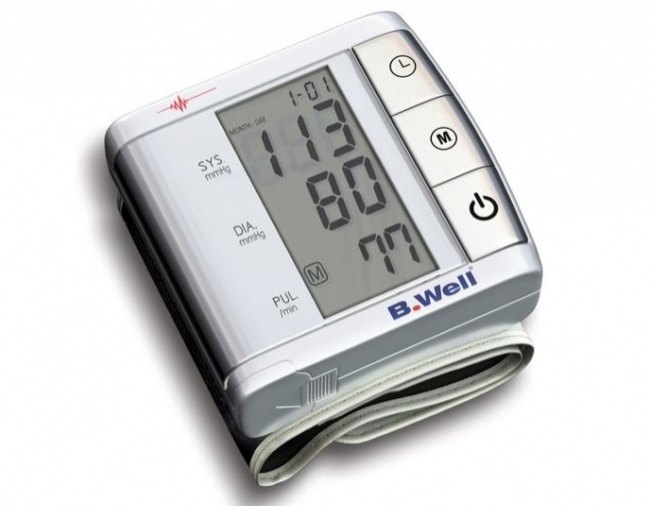
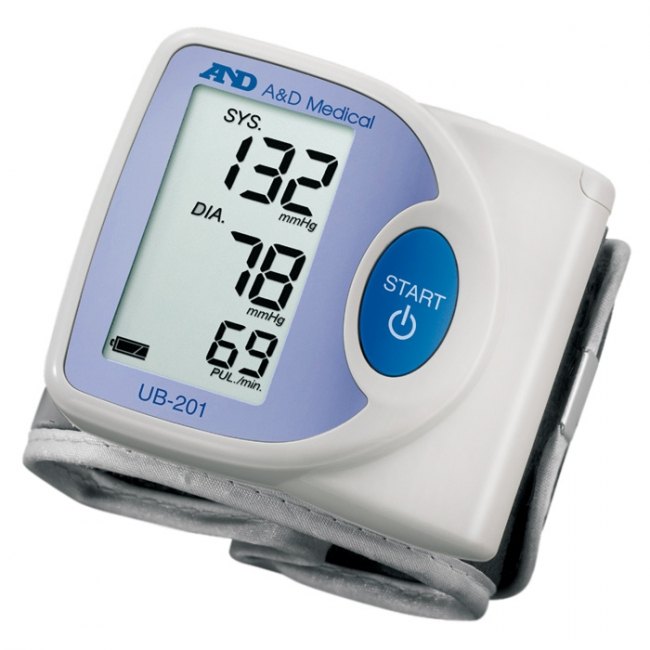
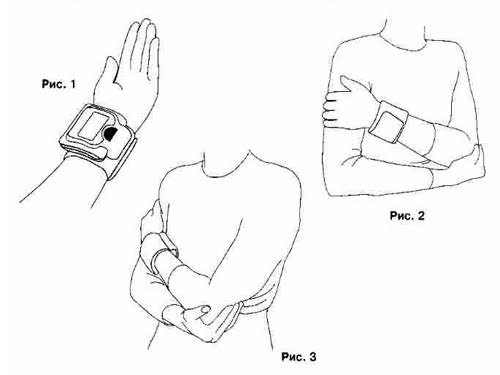

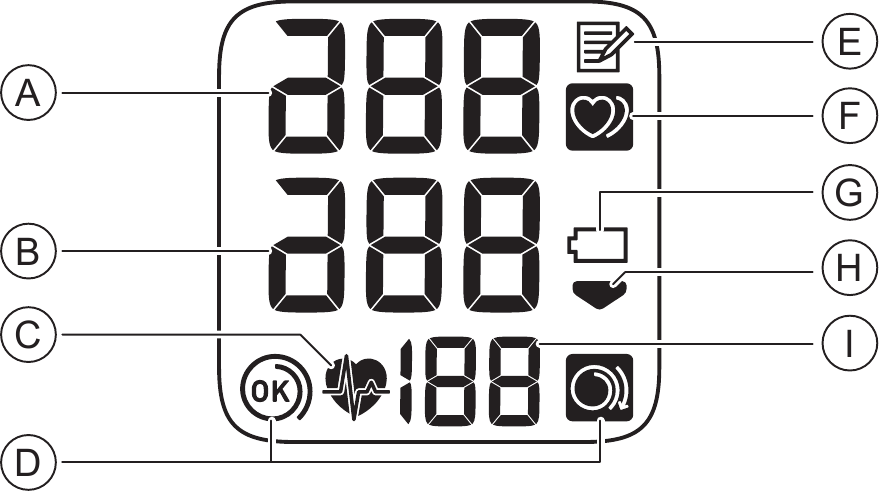
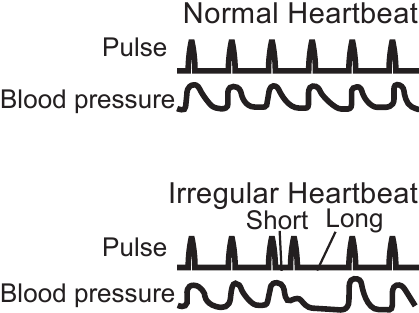
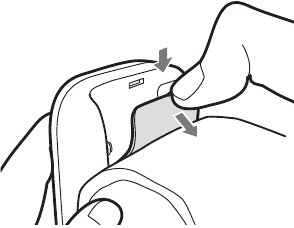
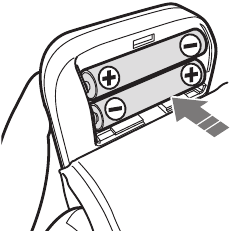
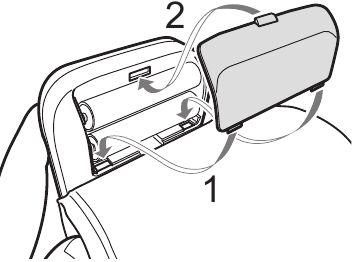
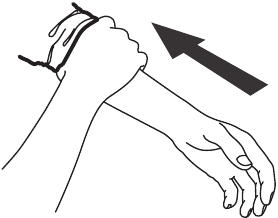
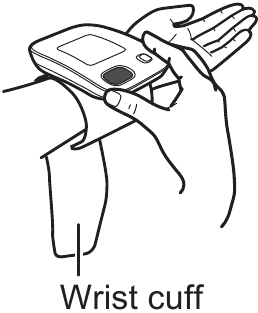
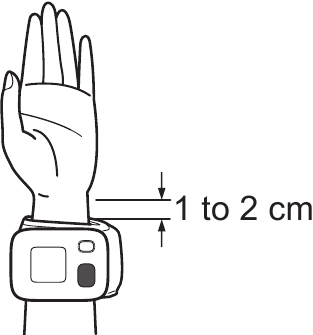
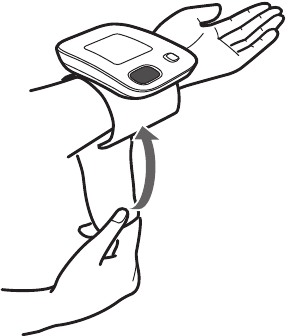
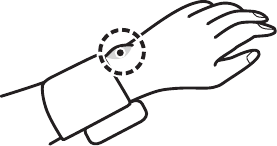
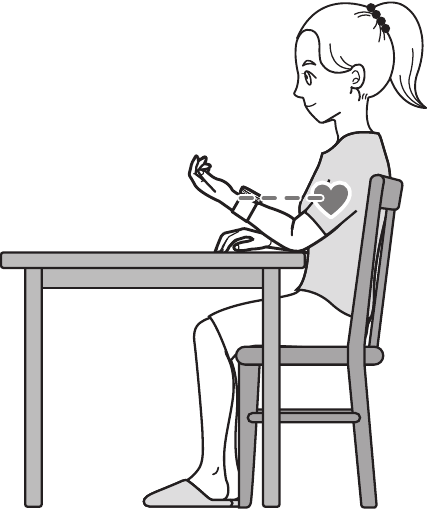
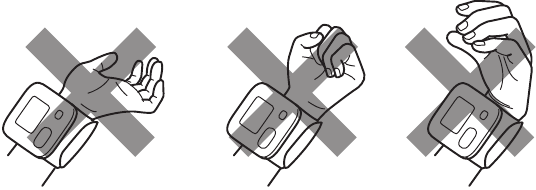
 button.
button.